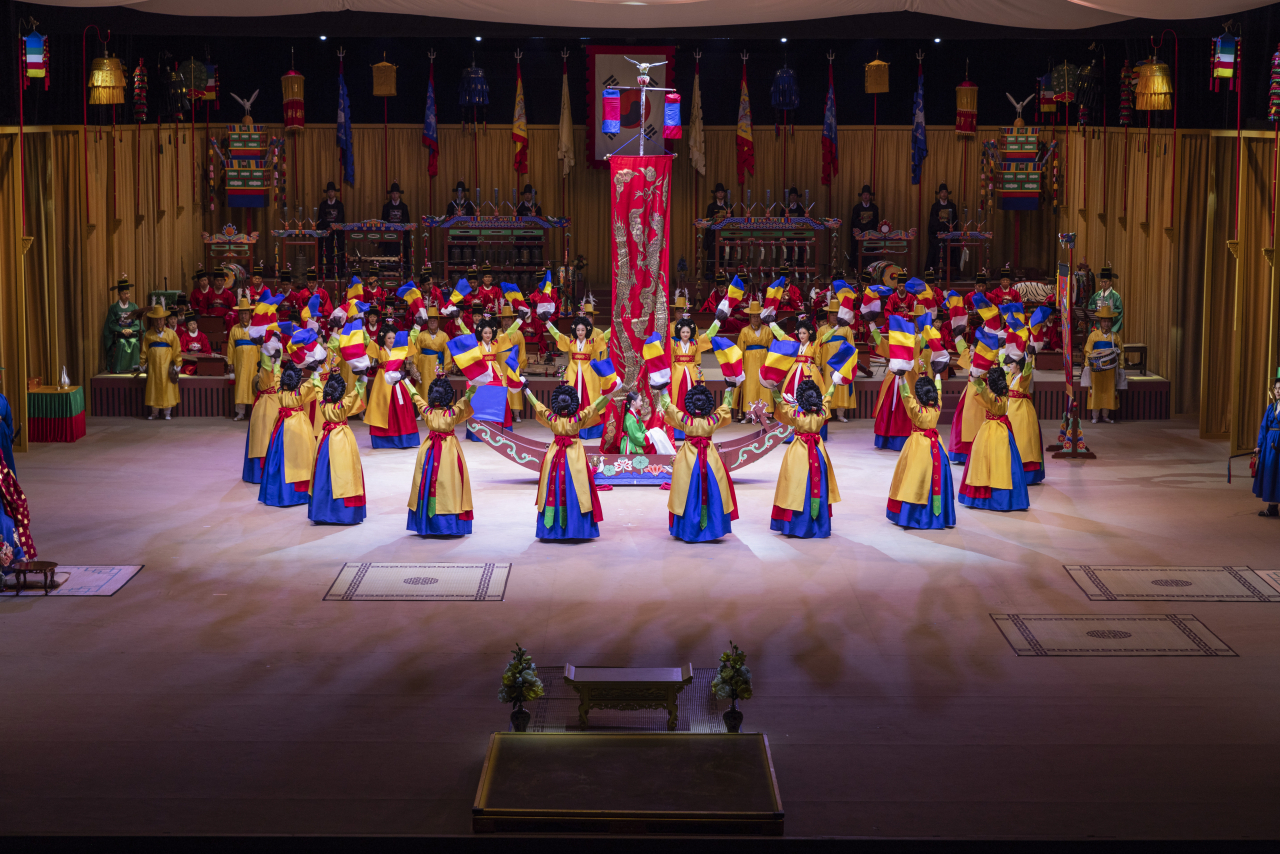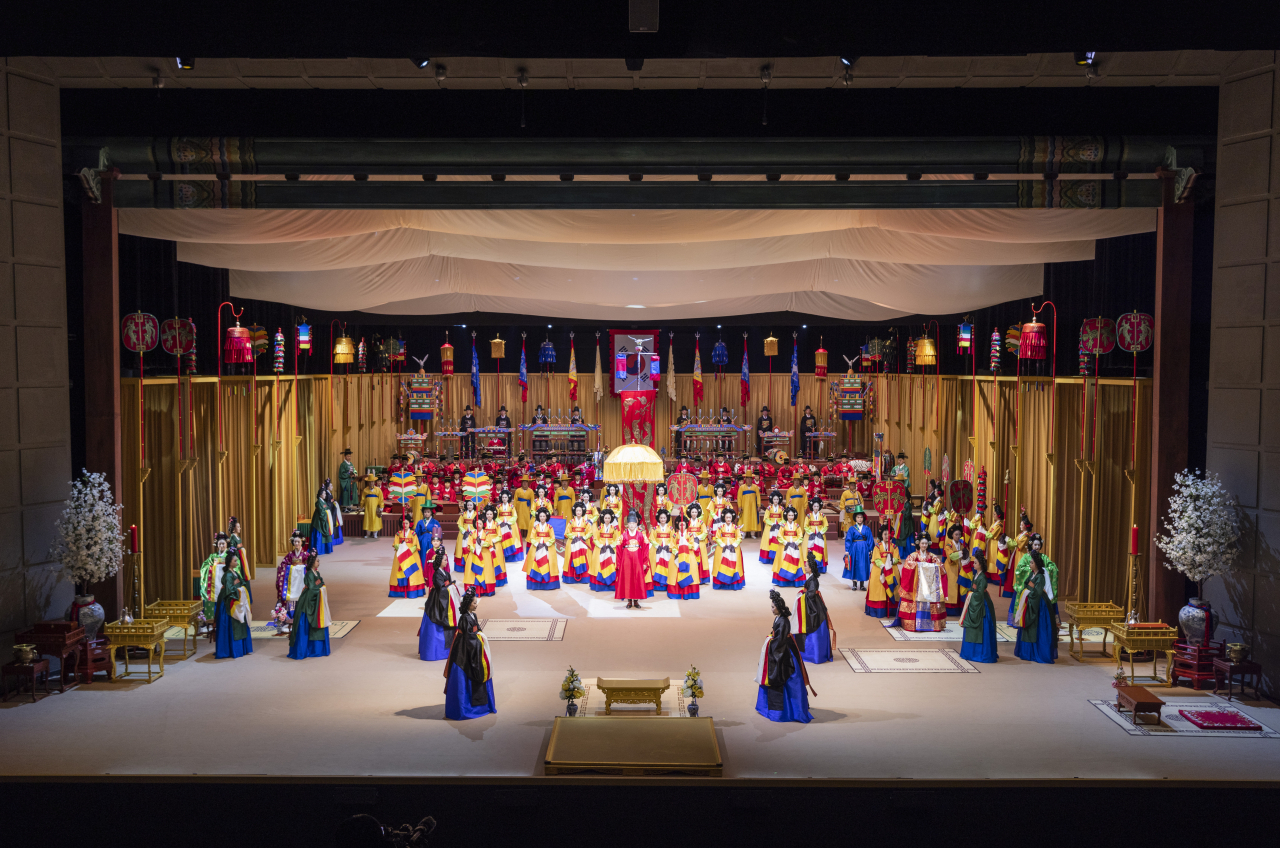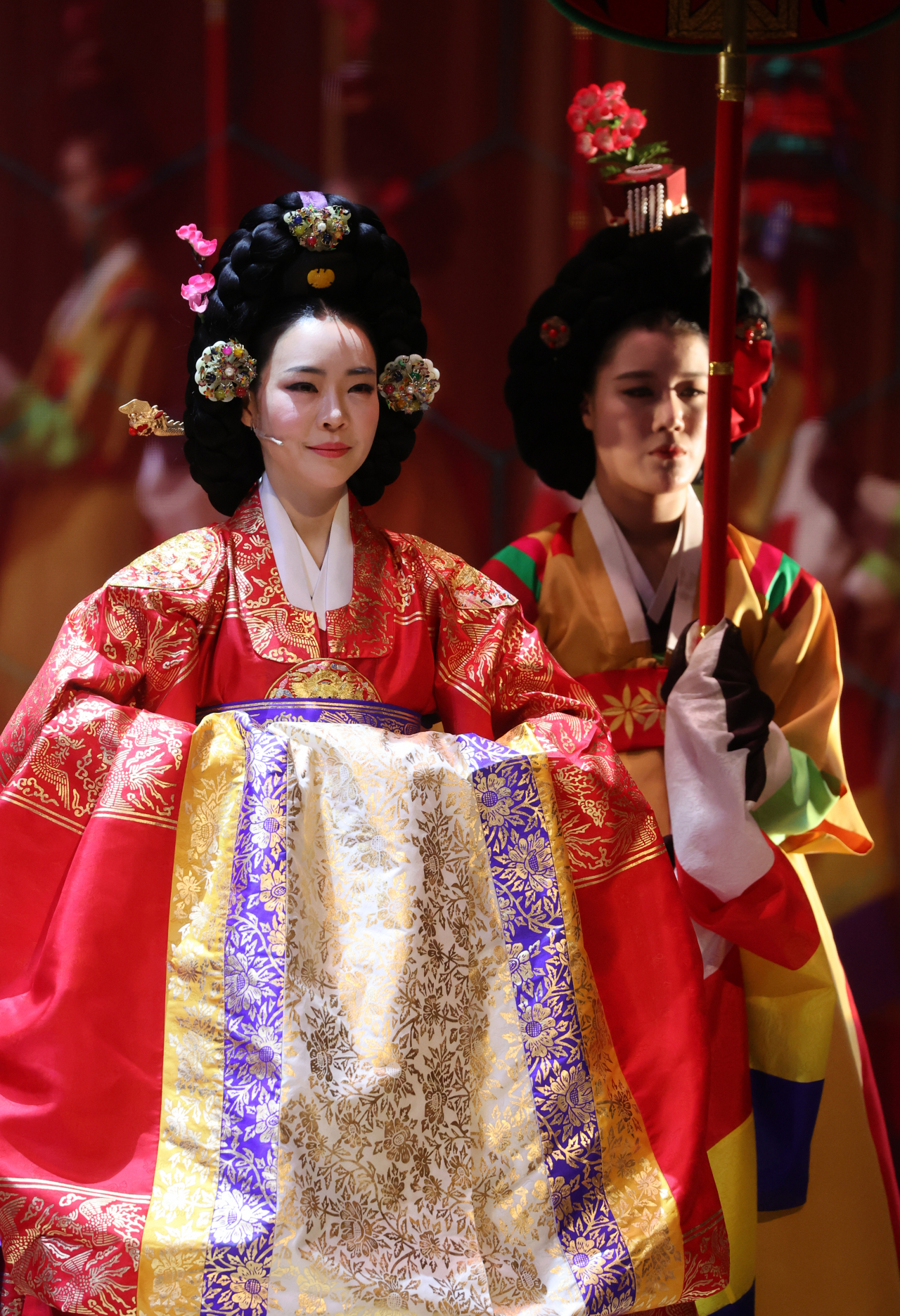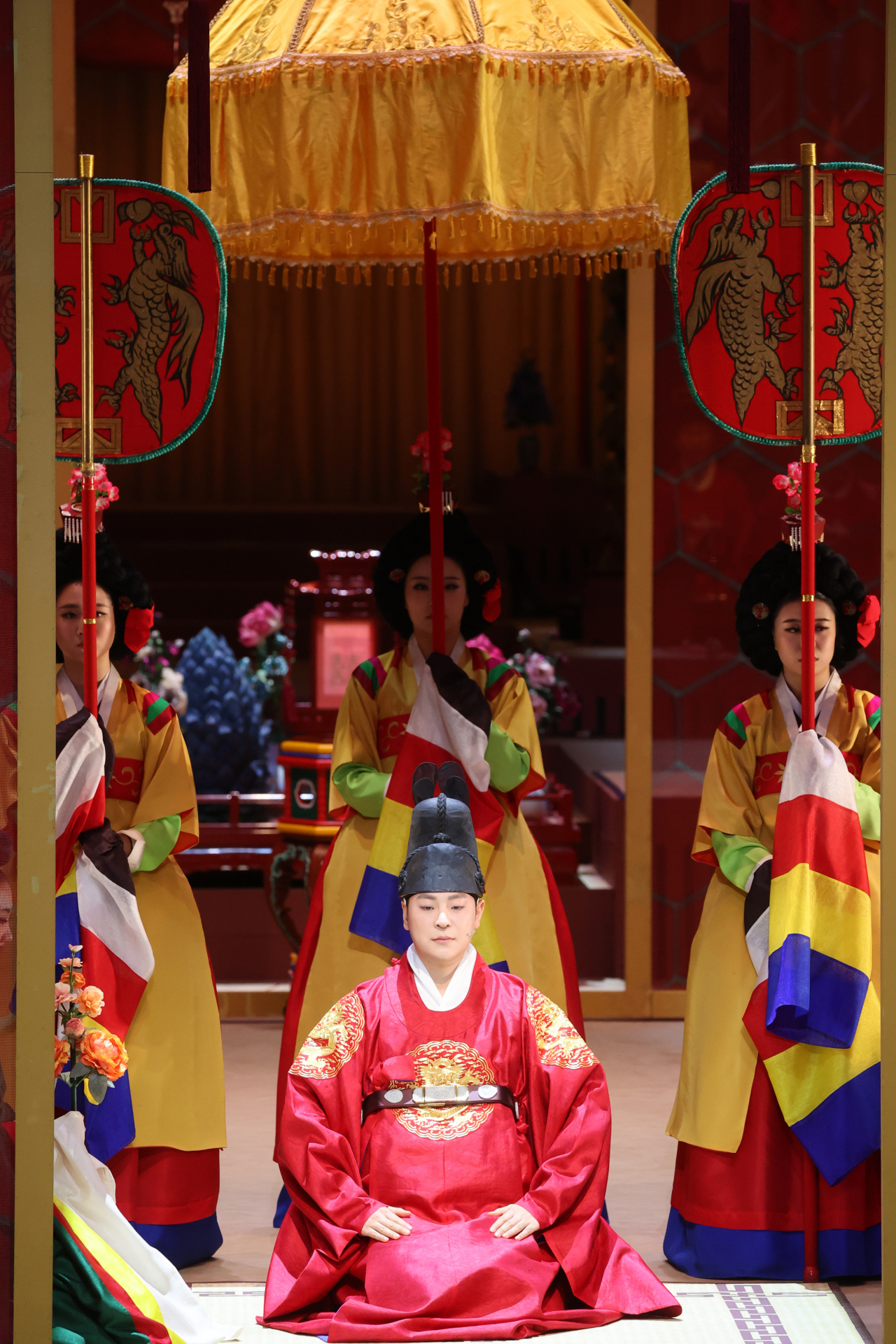 |
Members of the National Gugak Center perform "Imin Jinyeon" at the National Gugak Center in Seocho-gu, Seoul, during a rehearsal on Thursday. (National Gugak Center) |
The year 1902 was a turbulent time for the Korean Empire.
King Gojong declared a change of name for the country from Joseon to Daehan Empire, or Korean Empire, in 1897, in what would turn out to be a futile effort to protect the country's sovereignty against foreign powers.
Emperor Gojong oversaw partial modernization and westernization of the country but the Daehan Empire was weak among the world’s great powers.
Hoping to consolidate the imperial rule and dignity through a demonstration of the empire's majesty -- both internationally and domestically -- the Crown Prince made repeated requests to host a royal banquet celebrating both the 40th anniversary of Emperor Gojong’s ascension to the throne and his 51st birthday.
"Imin Jinyeon," meaning a royal banquet held in the Imin year, or 1902, is known as the last royal banquet in the 500-year history of Joseon and the Korean Empire.
Now, 120 years later, the banquet is being brought back to life on stage by the National Gugak Center.
 |
Members of the National Gugak Center perform "Imin Jinyeon" at the National Gugak Center in Seocho-gu, Seoul, during a rehearsal on Thursday. (National Gugak Center) |
“It was not easy, of course, but it wasn’t impossible either,” said Kim Young-woon, chief of the National Gugak Center, at a press conference held on Thursday, ahead of the five-day performance.
The performance is reenacted based on “dobyeong,” or paintings of folding screens, and “uigwe,” or a collection of royal protocols compiled during the Joseon era.
Kim said the documentation is so detailed that the names of musicians, dancers, and even flag bearers and how they were later rewarded were recorded.
“The royal banquet was the most refined artwork of the time for the emperor to enjoy,” said Kim. “It is now recreated on stage for citizens. I hope the value of the precious cultural heritage and the spirit inspire us.”
The performance is staged so that the audience will see the banquet from the perspective of the emperor’s throne.
 |
Members of the National Gugak Center perform "Imin Jinyeon" at the National Gugak Center in Seocho-gu, Seoul, during a rehearsal on Thursday. (Yonhap) |
 |
Members of the National Gugak Center perform "Imin Jinyeon" at the National Gugak Center in Seocho-gu, Seoul, during a rehearsal on Thursday. (Yonhap) |
The "Imin Jinyeon" was truly a feast of colors on an elaborately recreated stage. Traditional court music and dances were revived by the troupe from the NGC.
The members of the royal family -- starting with the prince, and then the crown princess -- offered drinks to the emperor -- in this performance, to the audience.
Poetry recitations and court dances followed each offering of drink and delivered hopes for a reign of peace.
In the court dance “Hyangryeongmu,” dancers had bells sewn to the sleeve hems which tinkled to the rhythm of the music performed by the gukak troupe behind the beaded curtain. In “Seonyurak,” dancers gracefully gathered around a large boat while singing a song to float the boat.
Park Dong-woo, who directed the "Imin Jinyeon," said the show took about one year to prepare.
“The emphasis was on reenacting the royal banquet rather than adding creative elements,” he said. “That we are performing the banquet 120 years later was also important. And because the 1902 banquet one was so impressive, the more we stuck to the original, the richer the performance would be.”







